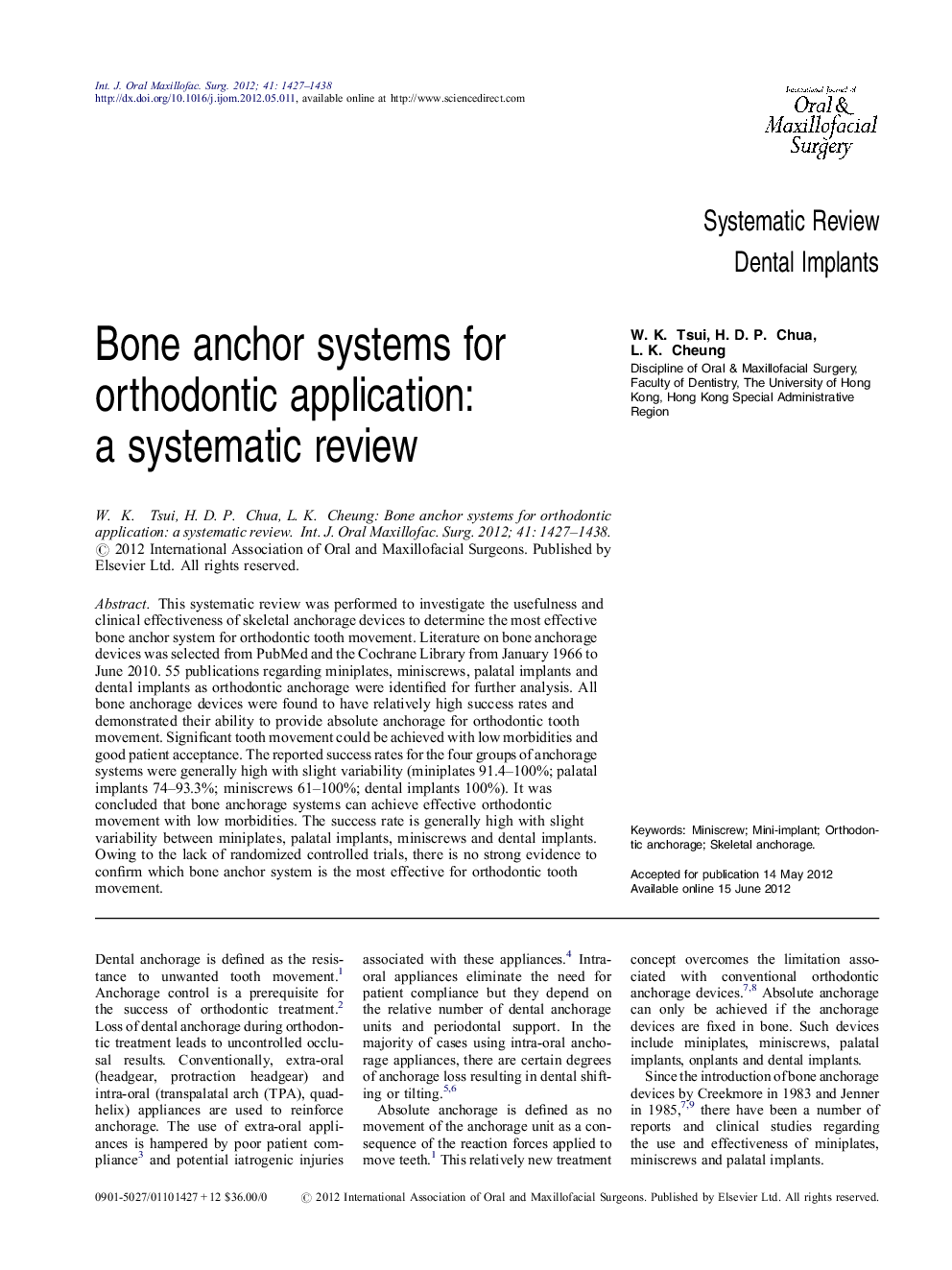| Article ID | Journal | Published Year | Pages | File Type |
|---|---|---|---|---|
| 3132902 | International Journal of Oral and Maxillofacial Surgery | 2012 | 12 Pages |
This systematic review was performed to investigate the usefulness and clinical effectiveness of skeletal anchorage devices to determine the most effective bone anchor system for orthodontic tooth movement. Literature on bone anchorage devices was selected from PubMed and the Cochrane Library from January 1966 to June 2010. 55 publications regarding miniplates, miniscrews, palatal implants and dental implants as orthodontic anchorage were identified for further analysis. All bone anchorage devices were found to have relatively high success rates and demonstrated their ability to provide absolute anchorage for orthodontic tooth movement. Significant tooth movement could be achieved with low morbidities and good patient acceptance. The reported success rates for the four groups of anchorage systems were generally high with slight variability (miniplates 91.4–100%; palatal implants 74–93.3%; miniscrews 61–100%; dental implants 100%). It was concluded that bone anchorage systems can achieve effective orthodontic movement with low morbidities. The success rate is generally high with slight variability between miniplates, palatal implants, miniscrews and dental implants. Owing to the lack of randomized controlled trials, there is no strong evidence to confirm which bone anchor system is the most effective for orthodontic tooth movement.
